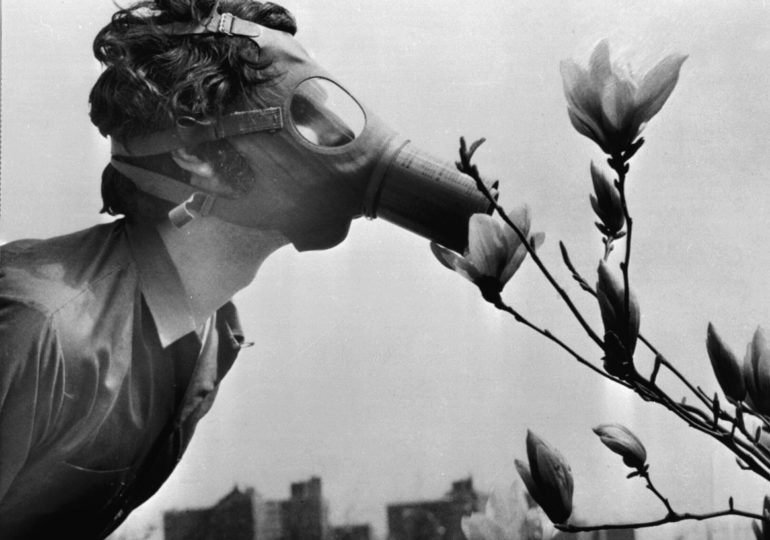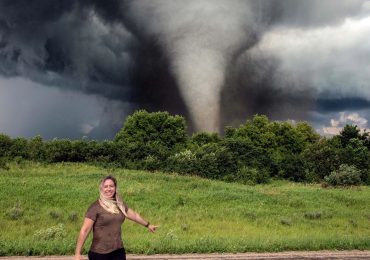More than 8 billion people inhabit Earth, and soon a springtime holiday will remind them of the need to take care of their home.
Earth Day, which takes place on April 22, dates back to 1970, when U.S.-based organizers were hoping to bring awareness to the environmental degradation they were witnessing across the country. Since then, recognition of the holiday has expanded to more than 190 countries who have added Earth Day to their calendar.
[time-brightcove not-tgx=”true”]
The holiday is both a grim reminder of the work that must be done and a celebration of the progress that has been made when it comes to climate change efforts. It’s also been the catalyst for actions including the creation of international climate agreements and environmental agencies.
This year’s theme is Planet vs. Plastics, which calls on government leaders, businesses, and everyday people to reduce plastic production by 60% by 2040. It is also calling for the full elimination of single use plastics by the end of this decade.
“The word environment means what surrounds you. In the case of plastics we have become the product itself—it flows through our blood stream, adheres to our internal organs, and carries with it heavy metals known to cause cancer and disease,” said Kathleen Rogers, President of earthday.org. “The Planet vs. Plastics campaign is a call to arms, a demand that we act now to end the scourge of plastics and safeguard the health of every living being upon our planet.”
Here are 10 interesting facts about Earth Day.
Earth Day was created by a senator
Gaylord Nelson, a Democratic senator from Wisconsin, was growing increasingly concerned over the state of the U.S. environment in the 1960s. After a massive oil spill in Santa Barbara, Calif. in January 1969, he had the idea to launch a nationwide, environmentally-focused teach-in on college campuses, drawing inspiration from the anti-war movements against the Vietnam War occurring on campuses around the country. Nelson recruited Denis Hayes, a young activist, to help bring the idea to the public.
The idea for Earth Day came after a series of environmental catastrophes
Hayes, one of the organizers behind the first Earth Day, previously told TIME that the idea behind the holiday came following a number of events that drew attention to the environment, including the release of Rachel Carson’s book Silent Spring in 1962 and the 1969 Cuyahoga River fire. Hayes said that while there were a number of groups in the U.S. working on different environmental issues—to reduce air pollution, bring attention to the impact of pesticides on farm workers, and more—they had never worked in conjunction.
“What we did was take all of those myriad strands, including wildlife protection issues, and wove them all together. It sounds strange today, but back then, the folks involved with those various causes didn’t think of themselves as having anything in common with one another,” he told TIME in 2019. “No one was asking that question at the end of the 1970s.”
More than 20 million people participated in the first Earth Day
Millions of people participated in the first Earth Day celebration on April 22, 1970. The event shut down Manhattan’s Fifth Avenue, as people demonstrated and participated in street clean-ups.
“The holiday mood on Fifth Avenue was exemplified by members of the architectural firm of Warner, Burns, Toan & Lunde, who spread a yellow and‐white quilt on the asphalt near 57th Street, put a tulip in a wine bottle for a centerpiece and enjoyed a picnic in the sun. A laughing crowd gathered around them and sang, ‘Happy Earth Day to You,’” the New York Times reported that day.
Earth Day is on April 22 because of college schedules
The date for Earth Day was largely dictated by the schedules of the college students Hayes and Nelson were hoping to attract. April 22 fell on a weekday during the school year—nestled between spring break and final exams, when the weather was mild enough to allow people to be outside.
The Environmental Protection Agency was created after the first Earth Day
The Environmental Protection Agency (EPA), which regulates mechanisms to protect the environment, was created on Dec. 2, 1970 as a direct response to the first Earth Day. Congress formed the agency after witnessing the huge participation in Earth Day demonstrations across the country, the EPA says.
“Last year some said there would never be another Earth Day. They saw concern for our environment as a fad, and claimed that the instant enthusiasm of an activist generation would soon flow elsewhere,” said William D. Ruckelshaus, the EPA’s first administrator during the second Earth Day in 1971. “I believe they were wrong.”
Earth Day went global in 1990
Millions of people participated in the first Earth Day movement, which led to the passage of key environmental laws, including the National Environmental Education Act, the Occupational Safety and Health Act, and the Clean Air Act in the U.S. later that year.
“Earth Day 1970 achieved a rare political alignment, enlisting support from Republicans and Democrats, rich and poor, urban dwellers and farmers, business and labor leaders,” says the earthday.org history page.
But its impact spans larger than just one country. The movement went global in 1990, after a group of environmental leaders approached Hayes to organize another major campaign for the planet, which mobilized 200 million people in 141 countries.
In the new millennium, the movement switched its focus to campaign against global warming, and as recently as 2020, over 1 billion people worldwide participated in Earth Day actions.
The Paris Agreement opened for signature on Earth Day
The Paris Agreement, the most significant international climate accord in history, was opened for signature on Earth Day in 2016. The treaty has more than 190 signatories, all of whom agreed to reduce carbon emissions and carry out other actions to reduce climate change.
United Automobile Workers union played a role in making Earth Day possible
The former head of the United Automobile Workers (UAW) union was one of the biggest contributors to the original Earth Day, donating $2,000 in 1970 (the equivalent of more than $15,500 today).
“The UAW was by far the largest contributor to the first Earth Day, and its support went beyond the merely financial. It printed and mailed all our materials at its expense — even those critical of pollution-belching cars,” Hayes told Grist in 2010. “Its organizers turned out workers in every city where it has a presence. And, of course, Walter then endorsed the Clear Air Act that the Big Four were doing their damnedest to kill or gut.”
Organizers are trying to have the biggest Earth Day cleanup event in history in 2024
For this year’s Earth Day celebration, earthday.org is working with Malaysian organizations to host the largest cleanup in Earth Day history. Penang Island, the country’s main island, has been impacted by plastic pollution due to tourism. At least 100,000 volunteers will be cleaning up the beaches and forests in the country, according to organizers. They will also plant more than 1 million trees.
Tens of millions of trees have been planted on Earth Day
Some 18 million acres of forest are lost every year due to deforestation, per the United Nations’ Food and Agriculture Organization. To combat this, earthday.org founded the Canopy Project in 2010 and says it has since planted tens of millions of trees around the world.
Leave a comment








